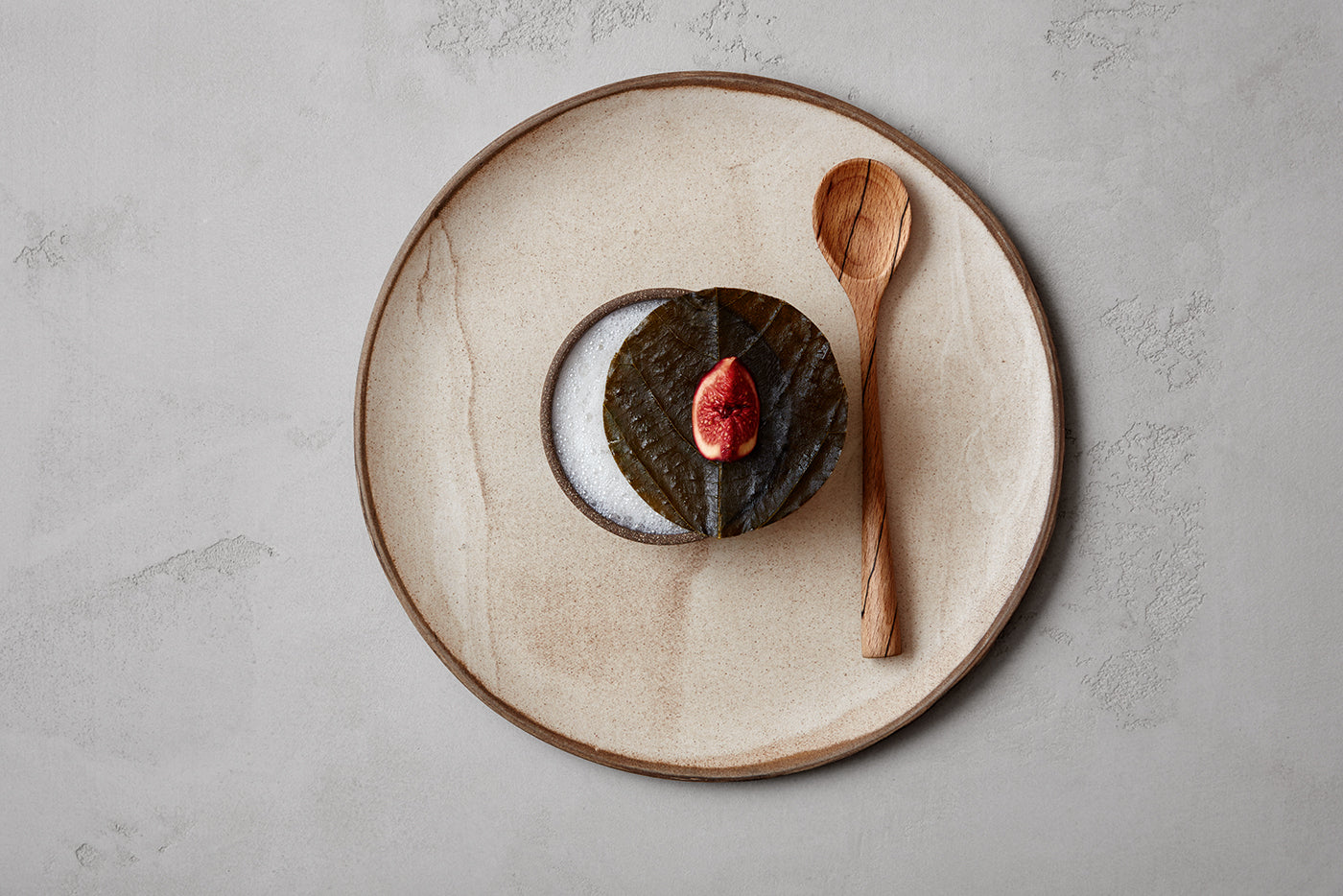
Ceramics Are The Foundation to Beautiful Plating
Rebecca Flint Marx explores the artistry of ceramics for Story on A Plate
Ceramics and tableware play an important role in plating presentations. They’re part of each plate’s story and can allow customers to interact with food in unexpected ways. Let it be said that there is nothing wrong with the round white plate. It has long been a stalwart presence at restaurants across the world, serving as an innocuous, agreeable backdrop for any number of cuisines. The round white plate demands nothing—it does not ask to be admired or even considered. Its story is that it has no story. It is as modest as it is steadfast, a blank canvas to be decorated over and over again, night after night.
And it is also a point of departure for many chefs who view their crockery and even cutlery as a crucial part of the story that they want to tell with their food. Where the round white plate reigned supreme even just a decade ago, a growing number of restaurants are choosing to make bolder choices, working with ceramicists who can craft tableware according to the chef’s vision not only for specific dishes but for the restaurant as a whole. They understand that the sensory experience of eating can be enhanced by ceramics whose colors, textures, and shapes reflect and complement a restaurant’s food and its cultural roots.

Matt Orlando’s dish of garden cabbages, quince, and purple wheat miso with dried barley. (Photo: Chris Tonnesen, Story on a Plate)
Some chefs will go the extra mile for their tableware. Each time Matt Orlando, chef of Copenhagen restaurant Amass, needs a new plate, he travels three and a half hours by train to Horsens in rural Denmark to visit the studio of K.H. Würtz—the ceramicists who have made all of Orlando’s bowls and plates since Amass opened in 2013. “He puts a ball of clay on the wheel and spins, and I stand there and say, ‘Bring the lip higher or make it roll out more,’” says Orlando. “I direct the shape of the plate.” Shown above, the ceramic plate has been chosen specifically to enhance the experience of the food. The dish fuses garden cabbages, quince, and purple wheat miso with dried barley, which is based on the texture of the support beams in the restaurant, which occupies a former shipyard warehouse.
“I think it would be so weird to use white plates in this restaurant,” Orlando says. “It would be so out of place with how we’re cooking and plating and serving guests here.” The food at Amass is “very much geared towards the plate,” he adds. The plate interacts with them giving them depth and context. They’re so intertwined that when Orlando travels elsewhere to cook and has to use other kinds of plates, he’ll be “90 percent satisfied with the end product.”
Custom-made ceramics can upend conventional expectations of how we’re supposed to eat at a ‘nice’ restaurant. Gothenburg-based handicraft company Västergården designs ceramics for some of the most renowned restaurants in Sweden and across Scandinavia. Many of their plates appear broken in half, this choice creates a striking framework that enhances the dish’s rustic nature while also asking the customer to consider why we expect plates to be uniform, whole shapes. As a result, the customer interacts with the food differently, something that can also be accomplished by using other unconventional serving vessels. Presenting food in a shell, or a lidded box, or in the middle of a nest (as has been done at the Copenhagen restaurant Høst) creates an experience that can sometimes connect with food’s more vernacular traditions and cultural roots, rather than grounding it in a more sophisticated fine-dining realm. Eating off a log or out of the shell is a reminder that food used to be foraged by necessity, and once traveled a more humble, and direct, path to our mouths.
Decorated plates can act as an asset to the dish: by serving pieces of sushi on a plate whose color and decoration evokes a body of water, the Berlin restaurant Kin Dee subtly encourages the customer to think about the fish’s origins. And at Hôtel Herman, the scoring on the plate adds form, depth, and texture to Marc-Alexandre Mercier’s dish of Gré des Champs cheese, guinea fowl, salsify, and hazelnuts—making the fried fish appear as rugged as an extra on Game of Thrones.

Marc-Alexandre Mercier’s Gré des Champs, guineafowl, salsify, and hazelnuts at Hôtel Herman. (Photo: Virginie Gosselin, Story on a Plate)
Textures and color play important roles in achieving this, and deciding which ones to use entails numerous considerations. The food that will be served on the plate is an important element, as is the restaurant’s interior and general atmosphere, Schembri explains. The presentation of the food “helps define the atmosphere and experience the restaurateur is trying to create.”
Schembri creates all of her work by hand, either on a wheel or free form. “It can be a slow and often challenging process, sometimes even frustrating when things don’t turn out the way you want,” she says. “However, it’s all part of the creative process.” When she creates new pieces, she thinks about the specific kinds of food they will be used for. “This is the beauty of creating functional ceramics, and specifically tableware,” she says. “There are always emerging ideas, tests, and ongoing developments. It’s a wonderful way to fill my day, and never gets tiring.”
As chefs and restaurants strive for ever-more inventive and unexpected ways to excite dinners, the way food is presented plays a crucial role in this development—ceramics, and tableware being no exception. Instead of the plate being an afterthought, ceramics can be the foundation of curating a culinary vision. The perfect plate can enliven the experience, they can present something in a completely unique context. Ceramics have the power to present colors and food coordination like a poetic rhythm, which is why chefs choose to pay almost as much attention to plates as the produce.
Displaying how some of the most esteemed chefs and restaurants carefully coordinate and decorate each dish, Story on a Plate is the art of presenting food beautifully.


